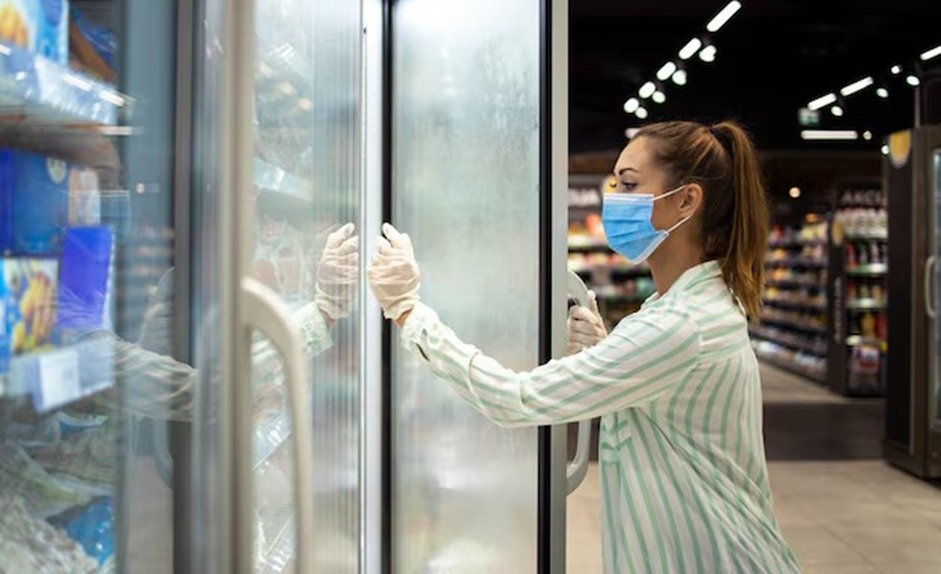Cool rooms are essential for various industries like food storage, pharmaceuticals, and even logistics. So, choosing the right materials is important for a mobile coolroom.
The material will ensure ideal temperature control and energy efficiency with overall functionality. From insulated wall panels to floors, walls to doors, each component requires careful consideration.
Let’s explore the best materials for different parts of a cold room, ensuring optimal functionality and energy efficiency.
Choosing The Best Material For Your Mobile Cold Room Panel
Choosing the right materials for a mobile cold room is important for optimizing cold room efficiency. High-performance insulation is common due to its superior thermal resistance.
Here are some materials example for different parts:
1. Insulated Wall Panels: The Core Material
An important role of this storage is the core material. Insulated wall panels maintain the desired temperature within a cold room.
Insulated panel roofs stand out as a top choice due to their excellent insulation properties. This material efficiently prevents heat transfer.
It ensures that the cold room remains at the desired temperature while minimizing energy consumption.
2. Interior Surface: Stainless Steel
Stainless steels have emerged as a preferred material for the interior surfaces of a mobile cold room due to their corrosion resistance properties.
The easy-to-clean feature is also a reason for this material’s emergence. This makes it an ideal choice where hygiene is paramount, like in cold storage facilities.
Stainless steel’s smooth surface also discourages the growth of bacteria. It ensures the preservation of stored goods under optimal conditions.
3. High-Density Polyethylene (HDPE): Cold Room Floors
The choice of flooring and ceiling materials and also the insulated wall panels maintain a sanitary and controlled temperature. HDPE is a durable and moisture-preventing standout plastic material for these areas.
This material offers exceptional preventive power to extreme temperatures and chemicals. The weatherproof surface is easy to clean preventing the accumulation of contaminants.
4. Cold Room Walls: Vapor Barrier Films
Effective insulation of the walls can maintain a consistent temperature within a cold room. With a vapor barrier, cold room walls and ceilings can maintain it.
So, it can compromise insulation leading to temperature fluctuations. These films are generally made using materials such as polyethylene or aluminum.
The films can provide an impermeable barrier against humidity. By incorporating vapor barrier films into cold room walls, one can enhance insulation efficiency and preserve the integrity of stored products.
5. Cold Room Doors: Thermal Doors
Choosing the appropriate door for a cold room is crucial to avoid temperature changes and loss of energy.
These doors typically consist of a blend of materials, including a core that provides outstanding insulation.
The outer layers are typically made of materials like steel or aluminum, providing durability and structural support.
The thermal insulation in these doors ensures that the temperature inside the mobile cold room remains stable, contributing to energy efficiency and cost savings.
6. LED Lights for the Whole Cold Room
Proper lighting is crucial in a cold room. It is not only for visibility but also to ensure energy efficiency. LED lights are the go-to choice for illuminating the entire cold room.
LED lighting consumes less energy generating minimal heat. It generally exhibits a longer lifespan than conventional lighting options. The minimal heat output is especially helpful in a chilly room environment, where keeping a stable temperature is essential.
LED lights contribute to a well-lit and safe environment, making it easier to organize and access stored items.
What Is the Best Cold Room Cleaning Procedure?
Maintaining a clean and sanitary cold room, along with the insulated wall panels, is important. Hygiene ensures the quality and safety of stored goods.
Daily Cold Room Maintenance Checks
- Spillages should be cleaned up immediately.
- Verify that the temperature in the cold room is suitable for your product.
- Inspect the walk-in cold room’s compressors for any signs of oil leakage.
Weekly Cold Room Cleaning and Maintenance
- Clean the cold room door seals and check if there are any signs of wear and tear, as general wear and tear may happen in the cold room.
- Thoroughly clean all surfaces and floors with ideal cleaning products.
- Organize your products maybe during the weekend if necessary.
Monthly Maintenance of Cold Rooms
- Always measure the mobile cold room’s temperature.
- Clean the evaporator and fins which is important for temperature maintenance.
- Check if the control valves are fully functioning.
- You will need to check if the reverse blowing is working properly.
- The defrosting function is one of the crucial for an effective walk-in cold room, so you will also need to check that.
- Perform a system functional test. This is to check there is no malfunctioning.
These are essential steps in preserving the integrity of the cold room environment.
Conclusion
Creating an effective mobile cold room involves meticulous consideration of materials for each element.
Thoughtfully select the suitable materials for each component. One can build a cold room that not only meets temperature and hygiene standards but also operates with efficiency.
This approach contributes to cost savings and plays a vital role in preserving perishable goods effectively.
Stay in touch to get more news & updates on Gossips.Blog!




